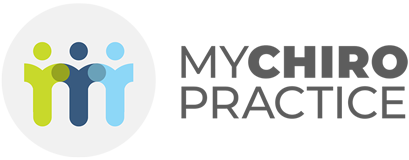The 7 Key Patient Touchpoints for Chiropractors: A Comprehensive Guide to Building Strong Patient Relationships
In this guide, we’ll explore the 7 key patient touchpoints that every chiropractic practice should focus on to ensure a seamless, patient-centered experience. By understanding and optimizing these touchpoints, chiropractors can improve patient satisfaction, foster loyalty, and ultimately grow their practice.

1. Online Discovery: The First Impression
The first patient touchpoint often happens online, long before they step foot in your clinic. Today, most people begin their search for a chiropractor by researching online. Whether through Google searches, social media, or online reviews, potential patients are forming impressions of your practice based on the information they find.
a. Your Website
Your website is the most critical online touchpoint. It acts as a digital storefront for your practice, and its design, content, and functionality can either attract or deter potential patients. A well-designed, user-friendly website helps build trust and credibility.
Key Elements of an Effective Chiropractic Website:
- Clear Navigation: Make it easy for visitors to find information about your services, staff, location, and how to book an appointment.
- Mobile-Friendly Design: Ensure your website is optimized for mobile devices, as many users will access it from their phones.
- Educational Content: Providing informative blog posts, FAQs, and videos can help educate potential patients about the benefits of chiropractic care and answer common questions.
- Online Booking: Offering the ability to book appointments online provides convenience and encourages patients to take immediate action.
b. Search Engine Optimization (SEO)
SEO plays a critical role in ensuring that your practice is discoverable in search engines like Google. By optimizing your website with relevant keywords, such as “chiropractor near me” or “back pain relief,” you can improve your ranking in search results and increase visibility to potential patients.
- Local SEO: Ensure your practice is listed in Google My Business and other local directories. This helps patients in your area find your practice and enhances your presence in local search results.
c. Online Reviews
Patient reviews on platforms like Google, Yelp, and Healthgrades are powerful tools for building trust. Many patients rely on reviews to make healthcare decisions, so it’s essential to actively manage your online reputation.
- Encouraging Positive Reviews: After a successful appointment, ask satisfied patients to leave a review. Positive reviews can significantly impact the decision-making process for potential patients.
2. Initial Inquiry: First Contact with Your Practice
Once a potential patient has discovered your practice online, their next touchpoint is likely to be the initial inquiry—either by phone, email, or through an online booking system. This is a crucial moment, as the way your practice handles these inquiries can set the tone for the entire patient experience.
a. Phone Calls
Many patients prefer to call to ask questions or schedule an appointment. How your staff answers the phone and handles inquiries can significantly impact a potential patient’s decision to book.
Best Practices for Phone Interactions:
- Prompt Answering: Ensure that calls are answered quickly and that patients don’t have to wait on hold for long periods.
- Friendly and Professional Tone: Staff should be trained to handle inquiries in a friendly, helpful, and professional manner.
- Provide Clear Information: Be ready to answer common questions about services, pricing, and appointment availability.
b. Online Inquiries and Booking
For patients who prefer to communicate digitally, offering an easy-to-use online booking system is essential. Ensure that your website’s contact form, email, and online booking tool are user-friendly and prompt quick responses.
- Quick Response Times: Respond to online inquiries as soon as possible, ideally within 24 hours. A timely response shows that your practice is attentive and values its patients.
3. The Initial Consultation: The First In-Person Interaction
The initial consultation is one of the most critical touchpoints in the patient journey. It’s the first time the patient will meet you and your team in person, and their experience during this visit will shape their perception of your practice.
a. Warm Welcome and Comfortable Environment
First impressions matter. From the moment the patient walks into your clinic, they should feel welcomed and at ease. A friendly greeting from the receptionist and a clean, inviting waiting area are essential to creating a positive experience.
Tips for Enhancing the In-Person Experience:
- Welcoming Reception Area: Ensure your reception area is comfortable and clean. Offer water or coffee, and provide reading material or educational brochures about chiropractic care.
- Friendly and Professional Staff: Train your staff to greet patients with warmth and professionalism. A simple smile and acknowledgment can go a long way.
b. Building Trust and Rapport During the Consultation
During the initial consultation, it’s essential to build trust and establish rapport with the patient. This is your opportunity to demonstrate your expertise, listen to their concerns, and provide personalized recommendations for care.
Key Elements of a Successful Consultation:
- Active Listening: Take the time to listen to the patient’s concerns and symptoms. This helps you provide a tailored treatment plan and shows the patient that you care about their individual needs.
- Clear Communication: Explain your findings, diagnosis, and treatment options in simple terms. Avoid using overly technical language that may confuse the patient.
- Patient Education: Educate the patient about the benefits of chiropractic care and how it can help improve their health and well-being. Use visuals, such as spine models or diagrams, to enhance understanding.
4. Treatment Experience: Delivering Care
The treatment experience is a major touchpoint that directly impacts patient satisfaction and loyalty. It’s not just about the effectiveness of the treatment, but also how the patient feels during and after each visit.
a. Personalized Care and Comfort
Each patient is unique, and their treatment experience should reflect that. Chiropractic care should be tailored to the individual’s specific needs, whether they are dealing with chronic pain, recovering from an injury, or seeking wellness care.
Ensuring Patient Comfort:
- Explain Each Step: Before starting treatment, explain what you’re going to do and how it will help. This helps put the patient at ease and builds trust.
- Check for Comfort: Regularly check in with the patient during the treatment to ensure they are comfortable and not experiencing any discomfort.
- Create a Relaxing Environment: A calm and soothing treatment environment, with appropriate lighting and music, can help patients feel more relaxed and enhance their overall experience.
b. Delivering Results and Managing Expectations
One of the most important aspects of chiropractic care is managing patient expectations. Some patients may expect immediate results, while others may need long-term care to see improvements.
- Communicating Progress: Be transparent about what the patient can expect from treatment. If significant improvements will take time, explain the process and the anticipated timeline for recovery.
- Follow-Up Recommendations: Provide patients with clear instructions on post-treatment care, including exercises, stretches, or lifestyle modifications that can support their healing process.
5. Ongoing Communication and Education
Effective communication doesn’t end after the treatment session. Following up with patients and providing ongoing education are key touchpoints that help keep patients engaged and motivated to continue care.
a. Post-Treatment Follow-Up
A simple follow-up call or email after a patient’s first treatment can make a big difference in their perception of your practice. It shows that you care about their well-being and are committed to ensuring they are on the right path to recovery.
Follow-Up Best Practices:
- Check on Patient Comfort: Reach out to the patient to ask how they’re feeling after treatment and whether they have any questions or concerns.
- Encourage the Next Appointment: Use follow-ups to encourage the patient to schedule their next appointment, especially if they are on a care plan that requires regular visits.
b. Educational Materials
Providing patients with educational materials about chiropractic care, wellness, and preventive strategies helps empower them to take control of their health. These materials can be shared in the form of brochures, email newsletters, or even blog posts on your website.
Topics for Patient Education:
- Benefits of regular chiropractic care
- Exercises to improve posture and spinal health
- Tips for managing back or neck pain at home
- The role of chiropractic care in sports injury prevention
6. Billing and Payment Experience
The billing and payment process is a touchpoint that can either enhance or detract from the patient experience. A smooth, transparent billing process helps build trust, while confusion or frustration with billing can negatively impact patient satisfaction.
a. Transparent Pricing
Patients appreciate transparency when it comes to the cost of care. Clearly explaining your fees, insurance coverage, and payment options upfront helps set expectations and prevents any unpleasant surprises.
Best Practices for Transparent Billing:
- Explain Insurance Coverage: If the patient is using insurance, make sure they understand what is covered and what out-of-pocket expenses they may incur.
- Offer Payment Options: Providing flexible payment options, such as payment plans or accepting various forms of payment, can make chiropractic care more accessible to patients.
b. Streamlined Payment Process
A seamless and efficient payment process is crucial to a positive patient experience. Offering multiple payment methods, such as online payments, mobile payments, or automatic billing, makes it easier for patients to pay for their care.
- Technology for Better Billing: Consider using digital tools, such as patient portals or mobile apps, that allow patients to view their bills, make payments, and access receipts.
7. Building Long-Term Relationships and Patient Loyalty
The final touchpoint in the patient journey is building long-term relationships that foster patient loyalty and retention. Keeping patients engaged with your practice, even after their treatment has ended, is essential for long-term growth.
a. Patient Retention Strategies
- Loyalty Programs: Offering loyalty programs or discounts for regular patients can incentivize them to continue care.
- Referral Programs: Encourage satisfied patients to refer friends and family by offering referral bonuses or discounts.
b. Staying Connected with Patients
Regular communication through newsletters, social media, and educational content keeps your practice top-of-mind. By providing ongoing value and maintaining a connection, you can ensure that patients return when they need future care.
Staying Engaged with Patients:
- Social Media: Use social media platforms like Facebook or Instagram to share updates, patient success stories, and educational content.
- Email Newsletters: Send regular newsletters with tips for maintaining spinal health, updates on new services, or upcoming events.
Conclusion: The Importance of Optimizing Patient Touchpoints
Every interaction a patient has with your chiropractic practice, whether online or in person, is an opportunity to build trust, provide value, and foster loyalty. By focusing on these 7 key patient touchpoints, chiropractors can create a patient-centered experience that not only attracts new patients but also keeps them coming back for long-term care.
From the moment a potential patient first discovers your practice online, through their initial consultation, to the ongoing treatment and follow-up, each of these touchpoints has the power to either strengthen or weaken the patient’s relationship with your practice. Optimizing these touchpoints ensures that patients feel valued, heard, and well cared for at every stage of their journey.
By creating a seamless, positive experience at each of these critical points, chiropractors can foster trust, increase patient satisfaction, and build long-lasting relationships. This ultimately leads to improved retention rates, increased referrals, and a solid foundation for sustainable practice growth. In today’s competitive healthcare landscape, optimizing these patient touchpoints isn’t just beneficial—it’s essential for any chiropractor looking to thrive in a patient-focused environment.





